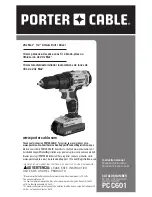
Fig. 14 a. Screw
The regulating screw has a little hexagon locking screw. During regulation it must be opened with
the included Allen key. After the regulation is completed the screw is locked.
IMPORTANT Regulate the arm speed low enough in order to prevent damages. Lock the
regulating screw after the speed has been regulated.
WARNING When you use the changer allow no one to be near the marker arms.
Normally the changer lifts both markers. The markers are lowered to the ground one after the other.
By changing the pin of the changer from the normal position to the hole on the side (see fig. 13), the
changer operates as described above with the exception that it always lowers the same marker to the
ground. The pin must be put in the side hole when there is no pressure in the cylinder and when the
other marker is down. When the pin is in the side hole the marker that was on the ground during
adjustment is lowered after every lift. This is useful when working around the field.
Fig. 13. Changer pin in normal position.
EXAMPLE
You sow clockwise around the field. In this case you want the right marker seen to the driving
direction be on the ground. The changer is in normal position, see fig. 14.
-
Lift and lower the markers until the right marker is on ground
-
Detach the spring pin of the pin (see fig. 14)
-
Move the pin to the hole (fig. 13) on the right side.
-
Fasten the spring pin
The changer lifts the markers by means of bars. The markers can be locked in transport position: the
middle marker by means of a locking valve, see fig. 7, the wheel track by means of a pin.














































